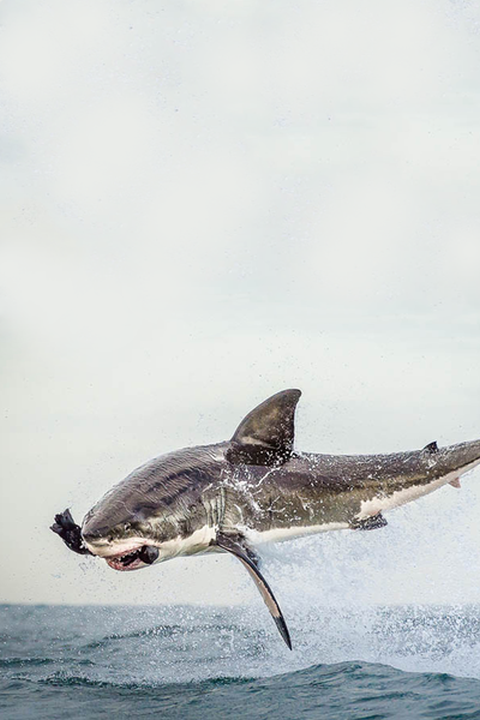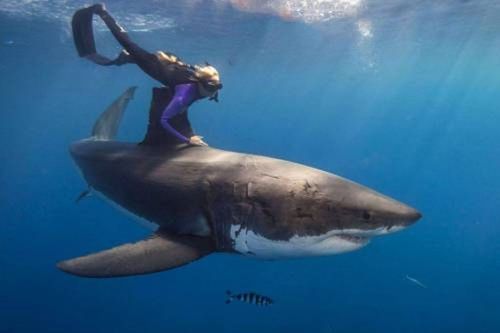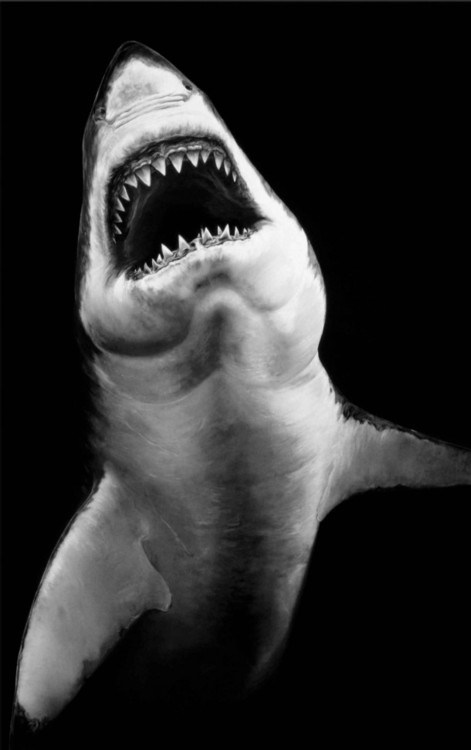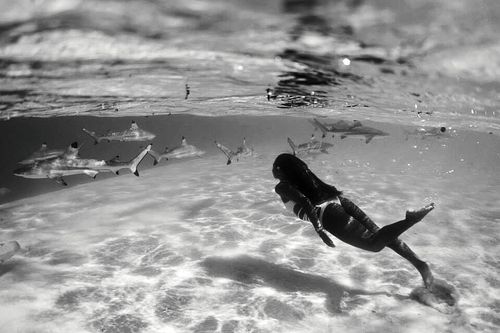At PISMO beach Ca we flew out at 9:15am and wanted to get some surfers on a DJI phantom 3 ...but saw a 10ft shark instead!! For any licensing requests please contact licensing@break.com
Fish On Fridays. "Hello Mr. Big Teeth!" (moving pictures)
[youtube http://www.youtube.com/watch?v=b2obQ4kTNcc]
Nothing like being up close and personal. Mommy!
Fish On Fridays. "Hello Mr. Big Teeth!"
Hello, Mr. Big Teeth! Robot "Interacts" With Sharks. (Moving Pictures)
//player.vimeo.com/video/101165012
REMUS SharkCam: The hunter and the hunted from Woods Hole Oceanographic Inst. on Vimeo.
Hey, this doesn't taste like chicken!
Fish On Fridays. Black Tip Reef Sharks And A Wahine. "Swimming With The Sharks."
Taxonomy
The blacktip shark was first described by Valenciennes in Muller & Henle (1839) as Carcharias (Prionodon) limbatus. It has also appeared in the literature as Carcharias (Prionodon) pleurotaenia, Carcharias microps, Carcharias (Prionodon)muelleri, Carcharias maculipinna, Carcharias ehrenbergi, Carcharias aethlorus, Gymnorrhinus abbreviatus, Carcharias phorcys, and Carcharhinus natator. The currently valid scientific name is Carcharhinus limbatus (Müller and Henle 1839). The genus name Carcharhinus is derived from the Greek "karcharos" = sharpen and "rhinos" = nose. The species name "limbatus" originates from Latin, meaning bordered in reference to the black markings on its fins.
Common Names
The blacktip shark gets its name from its distinctive black markings on the tips of its fins. It is also known as blackfin (Guam, Micronesia, Trinidad and Tobago), black-tipped (Papua New Guinea), small blacktip (Cuba, Leeward Islands), and spot-fin ground shark (UK).
Geographical Distribution
Blacktip sharks are cosmopolitan in tropical to subtropical coastal, shelf, and island waters. In the Atlantic during their seasonal migration they range from Nova Scotia to Brazil, but their center of abundance is in the Gulf of Mexico and Caribbean Sea. They occur throughout the Mediterranean and along the central West coast of Africa. In the Pacific they range from Southern California to Peru, including the Sea of Cortez. They occur at the Galapagos Islands, Hawaii, Tahiti, and other South Pacific Islands, to the North coast of Australia. In the Indian Ocean they range from South Africa and Madagascar up to the Red Sea, Persian Gulf, throughout India's coast, and east to the coast of China.
World distribution map for the blacktip shark
Habitat
The blacktip shark inhabits inshore and offshore waters, but is not a truly pelagic species. They are often seen nearshore around river mouths, bays, mangrove swamps, and in other estuaries, though they do not penetrate far into freshwater. They can be found offshore and over deep waters near coral reef dropoffs, but primarily stay in the upper 100 feet (30 m) of the water column.
A young blacktip shark cruises the Caribbean shallows
© Jeremy Stafford-Deitsch

Maybe, I Should Rethink Using My Inflatable Kayak. "Yikes!" (Moving Pictures)
[youtube http://www.youtube.com/watch?v=SCUc3U8WVMo]
Is that the lunch bell ringing?
Mommy!
Fish On Fridays. "Close Encounters Of A Teethy Kind." (Moving Pictures)
[youtube http://www.youtube.com/watch?v=6pA5-WhsAfI]
Are you f*cking kidding me mate?
Fish On Fridays.
Fish On Fridays. "Mr. Big Teeth Says Hello." (Moving Pictures)
[youtube=http://www.youtube.com/watch?v=hYxmVGhabRk&w=480&h=270]
Mommy!
Fish On Fridays. "A Wahine And Her Friend, Mr. Big Teeth, Go For A Swim."
Fish On Fridays. "Mr Big Teeth Joins The Lineup."
Tastes like chicken!
It's a good thing our human friend was looking in the other direction and his foot didn't act as a lure for Mr. Big Teeth. "Mommy!"
Photo: Nick Chill.
Fish On Fridays.
Fish On Fridays. "Hello Mrs. Big Teeth." (Moving Pictures)
[vimeo http://www.vimeo.com/62831314 w=480&h=270]
Variables with Kimi Werner from Patagonia on Vimeo.
Good thing someone wasn't hungry.
It also helps if you are fearless, experienced, and know your environment.
Meet the fearless huntress of the sea, Kimi Werner.
Mako Madness. "An Old Man And The Sea Moment." (video)
[youtube http://www.youtube.com/watch?v=9TIghY01kkk]
Hand line fishing + Big Fish + Hungry Fish = An Old Man And The Sea Moment.
"A bit of blood and guts in there."
Via Marlin Magazine.
Fish On Fridays. "Shawn, I'd Like To Introduce You To Mr. Big Teeth" (Video)
[youtube http://www.youtube.com/watch?v=kGHktIJd2BQ]
Hello my friend, I'd like to play with you a bit.
I don't know how he managed to stay calm and continue filming. If it was me, I would have been screaming, "Mommy!" and possibly defecating in my pants. But then, I'm not a stud like Shawn.
Yes my friends, I know you're shocked. But there are things in the ocean that will eat you.
The ocean is not a kiss the fish cartoon or a playful world of domesticated seals and dolphins. It's a wilderness. So please always be aware of the conditions, your abilities and the environment when heading out into the water.
Fish On Fridays.
Fish On Fridays.
Fish On Fridays. "Mr. Big Teeth Swims By."
What's holding you back? Jump on in and swim with him. He's sweet, lovely and misunderstood.
Photo via Rick Iossi.
Fish On Fridays. "Hello Mr. Big Teeth." (Moving Pictures)
[vimeo http://www.vimeo.com/58859756 w=480&h=270]
Shark Diver from Mark Tipple on Vimeo.
I don't care how sweet, lovely and misunderstood sharks are, I'm not going to jump in the water and swim with them. You can call me a chicken, it won't phase me a bit.





